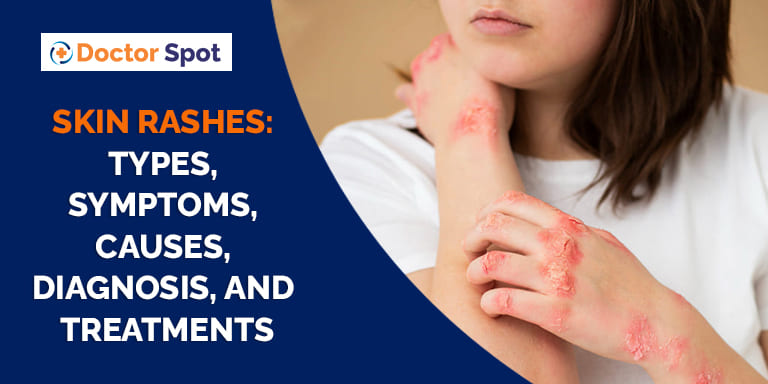Skin Rashes: Types, Symptoms, Causes, Diagnosis, and Treatments

Imagine waking up one morning to find unexpected guests on your skin. Not the early morning sunlight or the remnants of last night’s skincare routine, but rather, mysterious red patches that weren’t there the night before. Skin rashes, though common, throw many of us into a realm of worry and confusion. This article dives deep into the world of skin rashes, decoding their types, symptoms, causes, and the roadmap to relief. Ready for an exploration into the skin’s cries for help?
Understanding Skin Rashes
Skin rashes encompass a wide array of skin conditions that can arise due to various factors. Learning to identify them is the first step toward management and treatment.
Types of Skin Rashes
- Atopic Dermatitis (Eczema): Characterized by itchy, inflamed skin.
- Contact Dermatitis: Results from skin’s reaction to allergens or irritants.
- Psoriasis: Showcases with scaly, thick, red patches on the skin.
- Rosacea: Features redness, swelling, and small, red, pus-filled bumps on the face.
Symptoms to Watch For
- Itching or burning
- Redness or inflammation
- Dry, cracked skin
- Blisters or bumps
Understanding these symptoms helps in identifying the type of rash and its potential cause.
Causes and Trigger Factors
Pinpointing the exact cause of a skin rash often requires detective work, as they can stem from a myriad of sources.
Common Culprits
- Allergens: Such as plant pollen, pet dander, or certain foods.
- Irritants: Chemicals in cleaning products or cosmetics.
- Infections: Bacterial, viral, or fungal infections.
- Autoimmune disorders: Body’s immune system attacking healthy cells.
Environmental and Lifestyle Triggers
- Extreme temperatures
- Stress
- Poor diet
- Lack of sleep
Awareness of these can aid in prevention and management.
Diagnosis: The Path to Clarity
Diagnosing a skin rash often involves a combination of medical history review, physical examination, and possibly, laboratory tests.
The Diagnostic Process
- Visual Examination: The appearance of the rash provides clues.
- Patient History: Discussing symptoms, exposure to potential irritants, and family history.
- Tests: Skin biopsy or allergy tests, if needed.
What You Can Do
Keeping a symptom diary and noting any potential triggers can be invaluable in assisting your healthcare provider.
Navigating Treatments
Treatment varies widely based on the type and cause of the rash but aims to relieve symptoms and address the root cause.
Conventional Treatments
- Topical Creams: Steroid creams or moisturizers.
- Oral Medications: Antihistamines or corticosteroids.
- Light Therapy: For certain conditions like psoriasis.
Home Remedies and Lifestyle Changes
- Moisturizing regularly
- Avoiding known irritants
- Adopting a gentle skincare routine
- Managing stress through practices such as yoga or meditation
When to Seek Medical Help
“Don’t ignore persistent skin rashes. Early diagnosis and treatment can prevent complications,” advises Dr. Smith, a dermatology expert.
Conclusion
Skin rashes, the uninvited guests of our body’s largest organ, can be bewildering and bothersome. However, understanding their types, symptoms, causes, and treatments empowers us to respond effectively. Remember, though self-care measures can offer relief, consulting a healthcare professional is crucial for proper diagnosis and management. Let’s embrace the journey to skin health with knowledge and confidence.
Feel empowered to face the mysteries of skin rashes head-on? Share your thoughts and experiences in the comments below, or if you found this article helpful, remember to share it with friends or family who might also benefit.